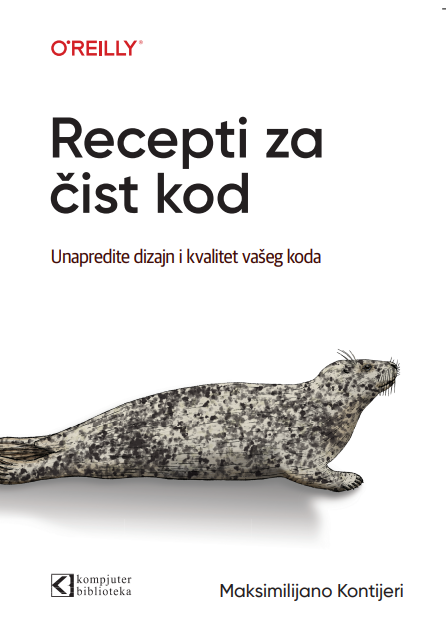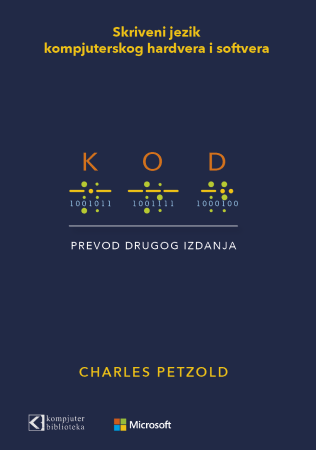
Autor: Joseph Howse et al.
Broj strana: 382
ISBN broj: 9781784399757
Izdavač:
PACKT PUBLISHING ![]()
Godina izdanja: 2015.
 |
 |
 |
 |
 |
||||
This book is ideal for you if you aspire to build computer vision systems that are smarter, faster, more complex, and more practical than the competition. This is an advanced book intended for those who already have some experience in setting up an OpenCV development environment and building applications with OpenCV. You should be comfortable with computer vision concepts, object-oriented programming, graphics programming, IDEs, and the command line.
Computer vision is becoming accessible to a large audience of software developers who can leverage mature libraries such as OpenCV. However, as they move beyond their first experiments in computer vision, developers may struggle to ensure that their solutions are sufficiently well optimized, well trained, robust, and adaptive in real-world conditions. With sufficient knowledge of OpenCV, these developers will have enough confidence to go about creating projects in the field of computer vision.
This book will help you tackle increasingly challenging computer vision problems that you may face in your careers. It makes use of OpenCV 3 to work around some interesting projects. Inside these pages, you will find practical and innovative approaches that are battle-tested in the authors’ industry experience and research. Each chapter covers the theory and practice of multiple complementary approaches so that you will be able to choose wisely in your future projects. You will also gain insights into the architecture and algorithms that underpin OpenCV’s functionality.
We begin by taking a critical look at inputs in order to decide which kinds of light, cameras, lenses, and image formats are best suited to a given purpose. We proceed to consider the finer aspects of computational photography as we build an automated camera to assist nature photographers. You will gain a deep understanding of some of the most widely applicable and reliable techniques in object detection, feature selection, tracking, and even biometric recognition. We will also build Android projects in which we explore the complexities of camera motion: first in panoramic image stitching and then in video stabilization.
By the end of the book, you will have a much richer understanding of imaging, motion, machine learning, and the architecture of computer vision libraries and applications!
Joseph Howse lives in Canada. During the cold winters, he grows a beard and his four cats grow thick coats of fur. He combs the cats every day. Sometimes the cats pull his beard.
Joseph has been writing for Packt Publishing since 2012. His books include OpenCV for Secret Agents, OpenCV Blueprints, Android Application Programming with OpenCV 3, iOS Application Development with OpenCV 3, Learning OpenCV 3 Computer Vision with Python, and Python Game Programming by Example.
When he is not writing books or grooming cats, Joseph provides consulting, training, and software development services through his company, Nummist Media ( http://nummist.com).
Steven Puttemans is a PhD research candidate at the KU Leuven, Department of Industrial Engineering Sciences. At this university, he is working for the EAVISE research group, which focuses on combining computer vision and artificial intelligence. He obtained a master of science degree in Electronics-ICT and further expanded his interest in computer vision by obtaining a master of science in artificial intelligence.
As an enthusiastic researcher, his goal is to combine state-of-the-art computer vision algorithms with real-life industrial problems to provide robust and complete object detection solutions for the industry. His previous projects include TOBCAT, an open source object detection framework for industrial object detection problems, and a variety of smaller computer vision-based industrial projects. During these projects, Steven worked closely with the industry.
Steven is also an active participant in the OpenCV community. He is a moderator of the OpenCV Q&A forum, and has submitted or reviewed many bug fixes and improvements for OpenCV 3. He also focuses on putting as much of his research as possible back into the framework to further support the open source spirit.
More info about Steven's research, projects, and interests can be found at https://stevenputtemans.github.io.
Quan Hua is a software engineer at Autonomous, a start-up company in robotics, where he focuses on developing computer vision and machine learning applications for personal robots. He earned a bachelor of science degree from the University of Science, Vietnam, specializing in computer vision, and published a research paper in CISIM 2014. As the owner of Quan404.com, he also blogs about various computer vision techniques to share his experience with the community.
Utkarsh Sinha lives in Pittsburgh, Pennsylvania, where he is pursuing a master's in computer vision at Carnegie Mellon University. He intends to learn the state of the art of computer vision at the university and work on real-life industrial scale computer vision challenges.
Before joining CMU, he worked as a Technical Director at Dreamworks Animation on movies such as Home, How to Train your Dragon 2, and Madagascar 3. His work spans multiple movies and multiple generations of graphics technology.
He earned his bachelor of engineering degree in computer science and his master of science degree in mathematics from BITS-Pilani, Goa. He has been working in the field of computer vision for about 6 years as a consultant and as a software engineer at start-ups.
He blogs at http://utkarshsinha.com/ about various topics in technology—most of which revolve around computer vision. He also publishes computer vision tutorials on the Internet through his website, AI Shack (http://aishack.in/). His articles help people understand concepts in computer vision every day.
Budite prvi koji će ostaviti komentar.

Popust cena:
2100.00 rsd

Popust cena:
2460.00 rsd
© Sva prava pridržana, Kompjuter biblioteka, Beograd, Obalskih radnika 4a, Telefon: +381 11 252 0 272 |
||